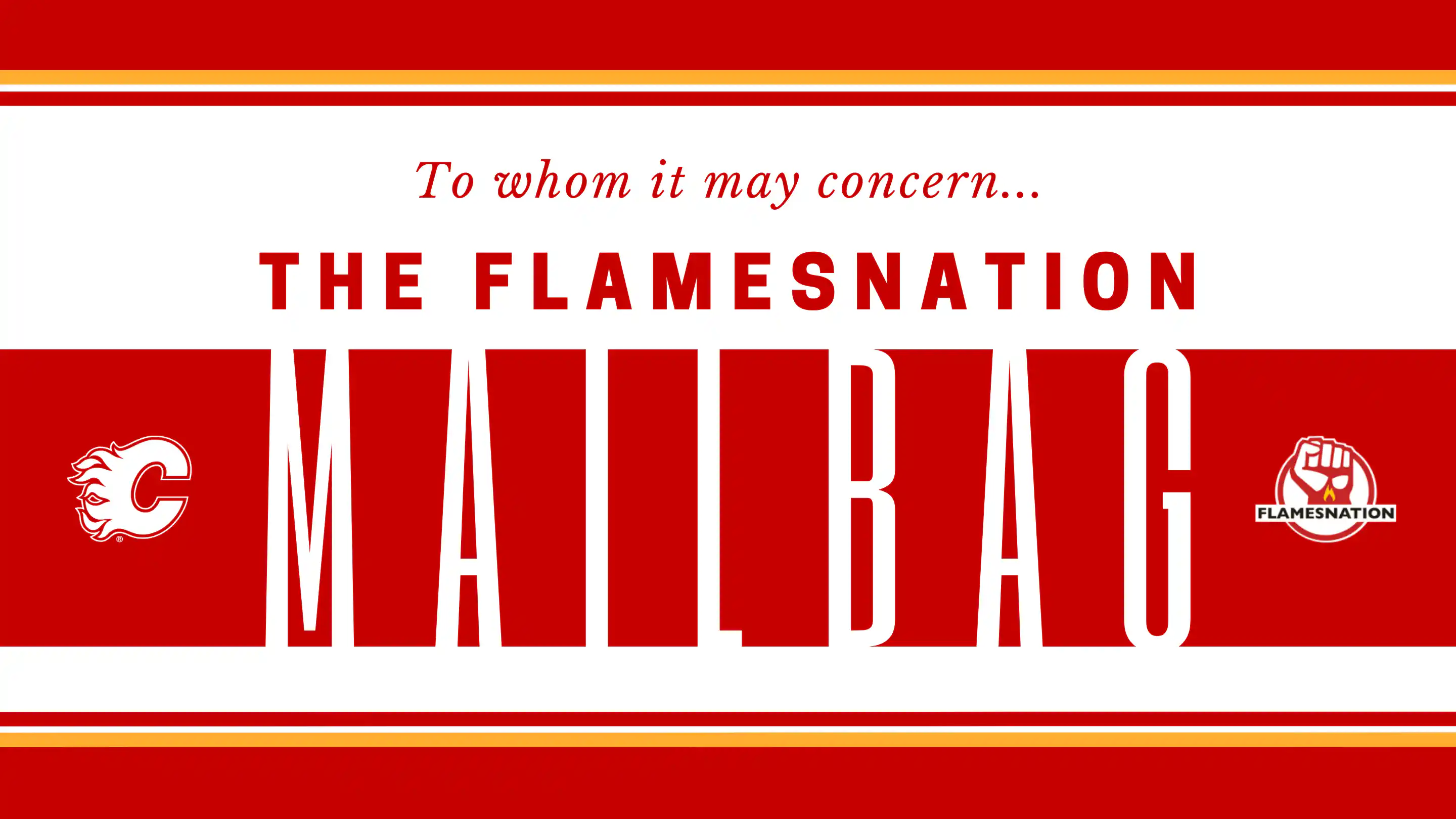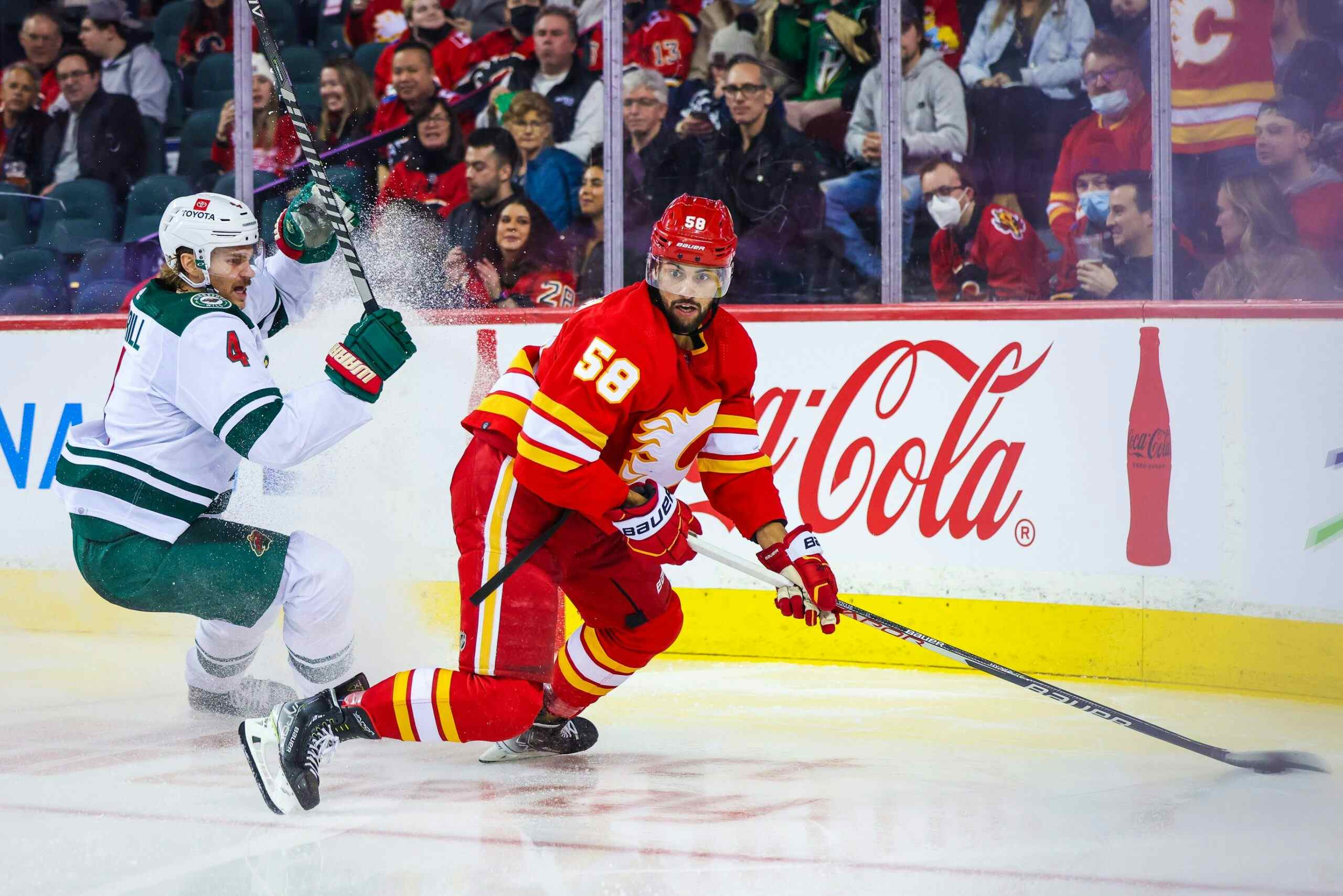Are the Flames struggling setting up on the power play?

By Mike Pfeil
5 years agoOn Saturday morning I touched on how the Calgary Flames have been entering the zone at 5v4, employing some variety of zone entry approaches to try and gain the zone. It should come as no surprise that despite generating entries, despite being given ample opportunities early on, and despite their actual roster talent they’ve already struggled with consistency.
There’s a lot that goes into finding opportunities to exploit in the offensive zone and for the Flames it starts with utilizing a strategy that maximizes the inputs (players, and Geoff Ward’s system) to maximize the outputs (shots, scoring chances, and goals). By diving into tracking how the Flames work in the offensive zone, who is involved in what events, and how their attack plan is designed we can get a sense of what’s right or wrong.
Tracking through six games
| Entry Type | In Formation % | Successes | Failures | Shots per setup | Unblocked Shots per setup |
| Controlled | 55.81% | 24 | 19 | 0.88 | 1.04 |
| Dumped In / Chipped in | 40% | 10 | 15 | 0.40 | 0.50 |
For this, we’ve removed situations where it was strictly an on the rush (OTR) situation and solely focused on instances where the Flames get into formation. There’s a few interesting – both good and bad – tidbits of information found in the tracking so far:
- Through the first two games against the Vancouver Canucks, the Flames dumped the puck in 16 times at 5v4.
- Of those 16 times, the power play was only able to set up nine times and generate a paltry four shots.
- Against the Avalanche, of the nine controlled entries they managed at 5v4, eight led to the Flames getting into formation and generating nine shots.
- Fourteen times Johnny Gaudreau has been the primary puck carrier entering the zone, which has led to the Flames getting into their 1-3-1 formation.
- Conversely, the Flames haven’t capitalized 13 times after having Gaudreau generate a zone entry for the team.
Part of the struggle comes from the team being collapsed on too quickly after entering the zone, along with ineffective decision making, leading to them having to regroup either in their own end or the neutral zone to try again. Along with that, the Flames at times have been shooting themselves in the feet with lackluster decision making and poor communication that makes them come off unstructured or disengaged:
Failed to load video.
In game one of the season versus the Canucks, the Flames looked like a mess, struggling to decide between slowing down the play to set up or continue the pace of the play occurring. Sean Monahan’s entry gives the Flames’ PP1 unit time to get setup, but the Canucks penalty kill has already collapsed on the high-danger portion of the ice. Matthew Tkachuk electing to break in as opposed to passing off to Mark Giordano or Gaudreau results in the entry effectively being wasted.
In the same game, the second power play unit works up ice and enters the zone with room to work. There are options, but the Flames’ forwards elect to try and cycle the puck around the ice to stretch out the Canucks’ defenders. It backfires and the entry is wasted again.
In the final example of failing to maximize any return on investment with the controlled entry, Tkachuk enters the zone against the St. Louis Blues’ PK. There’s little to no support in assisting him in an effort to get set up at all. By the time Monahan makes it over to assist and salvage the situation the play is dead and the Flames have to regroup.
When it works… it works great!
Failed to load video.
You can see just how effective the team can be when leveraging the creativity and speed they possess. The bulk of this power play runs through Gaudreau as he breaks in, weaving through the Avalanche’s penalty kill as they hope to suppress and contain his entry. For the Avalanche, they’re running a Czech Press to counter the Flames in their 1-3-1.
Giordano and Gaudreau start to exploit the +1 in the Avalanche PK, creating an opportunity for Gaudreau, leading to the rest of the unit to recover and start again. Later on, Elias Lindholm utilizes a cross-ice pass to again find Gaudreau as seams in the PK continue to open up. Even after the puck exits the zone Girodano is efficient and diligent of the time restraint of their power play. The unit quickly regroups and enters the zone again to continue in search of a PPG.
While effective for highlighting the prowess of Gaudreau, the other forwards (Monahan, Lindholm, Tkachuk) aren’t seeing their strengths maximized. With Monahan in the bump-back role and Lindholm or Tkachuk involved along the half-wall/net-front, it may be in the Flames’ best interests to keep Tkachuk as the net-front/down low option.
Tkachuk has a knack for working in this area already at 5v5 and the Flames did experiment a bit last season with him in this role. His ability to pass from low to high has been effective and continues to be, and this particular passing method has been known to be predictive in creating goals.
What’s next?
The team, despite some inconsistencies at 5v4, is off to a pretty good start, including Wednesday’s beating of the Boston Bruins. The unfortunate side of the victory was their inability to create or generate anything threatening against the Bruins’ PK. The Flames, as the season continues, will need to find opportunities to capitalize.
Moreover, it’s going to take more than relying on on the rush chances or post-faceoff configurations. The NHL is a copycat league and more teams are starting to embrace hyper aggressive penalty kill approaches to neutralize power plays. The last thing the Flames need is the same erratic power play like last season.
Next week we’ll look into the data I’ve collected, but visualized and plotted using some of open-source tools to take this tracking project to the next level. In particular, we’ll examine where zone entries-against are happening at 4v5 and how the Flames generate shots at 5v4.
Recent articles from Mike Pfeil





